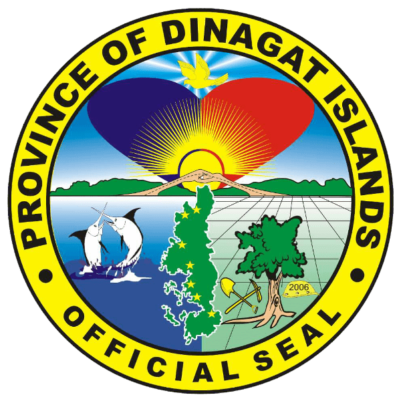
History
___________________________________________________
Even before the
coming of the Spaniards, the major islands now under the Province of Dinagat
Islands were already sparsely inhabited by emigrants coming from mainland
Surigao and the nearby islands of Visayas particularly Leyte, Bohol, Samar and
Cebu. In the early days, a story was told that a stranger reached the place in
search of greener pasture. He approached a native and asked what the
inhabitants do for a living. The native said that they farm and fish to live.
The stranger’s interest in fishing prompted him to inquire where they fish, and
the native replied and pointed to a place saying – “dinhi niini na dagat”
(here in this sea). Since then, the place was called Dinagat. Little is written
about the ancient history of Dinagat Islands. However, the 20th century
witnessed the emergence of the islands in the map of the Philippines. Three
major events captured national attention and changed the lives of Dinagatnons.
These are: 1) the great cholera epidemic of early 1900’s, 2) the Battle of
Surigao Strait, and 3) the influx of the member of Philippine Benevolent
Missionaries Association (PBMA) in the island. The spread of the great cholera
epidemic from Manila to Dinagat Islands in July 1902 resulted to an octopus
effect in the area threatening to dissipate Dinagat’s sparse population. This
epidemic claimed 58 deaths in the towns of Dinagat, Unip, Sabanay, Libjo and
Melgar alerting health authorities on end. Their epic quest to contain its
spread was very well documented in Philippine medical journals.
The province was
the site of the historic Battle of Surigao Strait during the Second World War.
The Municipality of Loreto became the entry point of the American Liberation
Forces on October 17, 1944. It was on this shore that the 6th Ranger Battalion
of the 6th U.S. Army under Maj. Henry A. Mucci landed at Sitio Campintac of
Barangay Panamaon, Loreto. It was during this landing that the American flag
was first rehoisted on Philippine soil after the Philippine-American Forces
were defeated at the start of World War II by the Japanese Forces. They named
the place “Black Beach No. 2”. The brave stance of the combined
Philippine-American Forces in Loreto helped opened the door of Philippine
liberation from the claws of Imperial Japan that culminated in the withdrawal
of the Japanese Forces from the Philippine soil.
In 1965, Ruben
Edera Ecleo Sr. founded the Philippine Benevolent Missionaries Association Inc.
(PBMA Inc.) at Sitio Puyange Barangay Matingbe of Dinagat Municipality. PBMA is
a non-sectarian brotherhood association with a mission to help those who are in
need, especially those sick people through divine healing without asking
anything in return. The charismatic leadership and power to heal the sick by
Ruben Edera Ecleo,Sr. and his missioners spread like wild fires in many
provinces of the country, attracting more people to join PBMA. In the later
part of 1960s, members of the association began to settle in the islands that
led to the increase in its population. Later, the Sitio Puyangi became Barangay
San Jose of Dinagat where the main office of PBMA was located. The barangay was
named in honor of Jose Ecleo who was its pioneer settler and father of the late
founder of PBMA. Ruben Edera Ecleo, Sr. served as municipal mayor in the town
of Dinagat for 20 years. During that time, great improvement was observed in Barangay
San Jose and in other neighboring places through voluntary labor or “pahina”
rendered by the members of the Association. Thus, in 1980, Barangay San Jose
became the “Most Outstanding Barangay” in the Philippines. The establishment of
a haven for the members of Philippine Benevolent Missionaries Association in
different barangays of Dinagat Municipality in 1970’s changed the local
socio-political dynamics in Dinagat Islands. Their arrival suddenly highlighted
the need of more social services in the area and the creation of San Jose
Municipality which is now the center of trade in the island. The new province
has seven (7) municipalities and forty-seven (47) islands & islets with
Dinagat Island as the biggest and where all seats of municipal governments are
now located. The Municipality of Dinagat is the oldest and the mother
municipality of the province. The seven municipalities used to be part of the
First District of the Province of Surigao del Norte until the province was
created on October 2, 2006 through Republic Act No. 9355.

Dinagat Islands (Cebuano: Mga Pulo sa Dinagat; Surigaonon: Mga Puyo nan Dinagat; Kabalian: Mga Puyo san Dinagat; Waray: Mga Purô han Dinagat; Filipino: Mga Islang Dinagat), officially the Province of Dinagat Islands, is an island province in the Caraga region of the Philippines, located on the south side of Leyte Gulf. The island of Leyte is to its west, across Surigao Strait, and Mindanao is to its south. Its main island, Dinagat, is about 60 kilometres (37 mi) from north to south.



